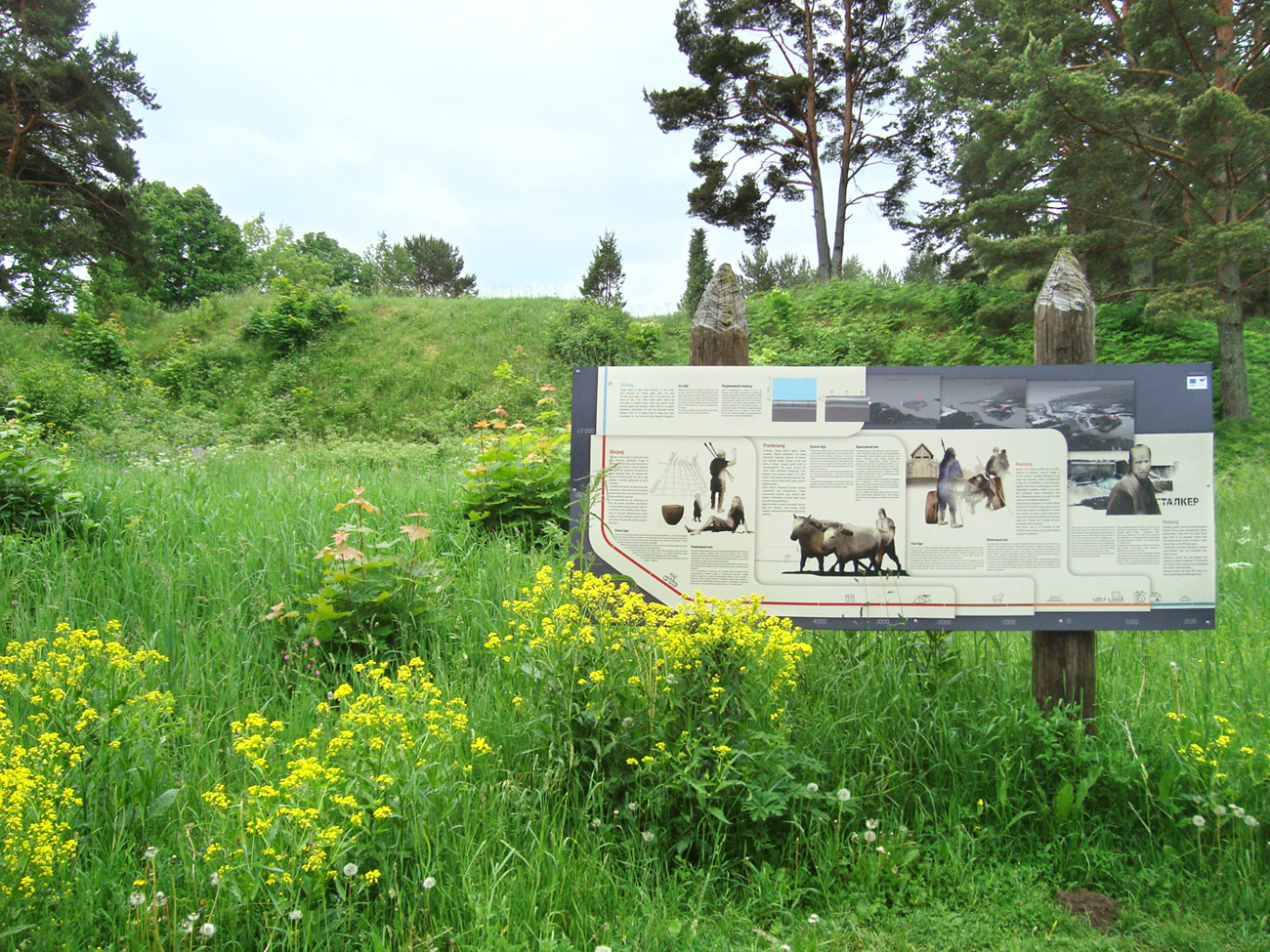Jägala Jõesuu hill fort
During the last Ice Age, the ice mass compressed the layers of the earth. After the ice melted, land slowly rose to its previous position. This process is still going on today, especially around coastal areas, where the retreating sea gradually alters the location of the coastline, and this in turn has an impact on historical human settlement.
The surroundings of the Jägala Jõesuu hill fort, with their diverse historical settlements, are an especially fascinating example of such changes; the dam of the power plant, established in 1922, artificially reversed the process of retreating water.
The location of the later fort first emerged from the mouth of the Jägala river as an island about 7000 years ago. The oldest traces of human settlement on this island date from about 2000 B.C. During the 1922 excavations, the archaeologist Artur Spreckelsen found the remains of a Stone Age settlement. Among other things, shreds of a comb ceramic pot were found, which enabled the ancient vessel to be restored. It is now known as the Jägala pot, and is so far the best surviving example of comb ceramics.
When the land rose, the island joined the right bank of the river in about 2000 B.C. and thus a cape with steep banks formed in the river, providing a good place to build a fort.
The existence of a fort in Jägala Jõesuu was already established in the early 20th century. However, excavations in the 1920s and individual later inspections did not yield sufficient information for dating. The Jägala hill fort is the one with the largest area in Estonia (2.8 ha). Because of its mighty embankment, the fort was thought to date from the end of prehistory, and on the basis of an occasional find, to the 5th–6th century.
Since 2005, the Jägala-Linnamäe Non-Profit Association, in cooperation with the University of Tartu, has organised purposeful research of the hill fort. It has transpired that the fort was established already in the 2nd–3rd century B.C. This was therefore the biggest known fort in the whole of northern Europe. Similar bigger forts from the Pre-Roman Iron Age can be found in Central and Western Europe, in the settlement areas of ancient Celtic peoples.

In recent years, various unique finds from the same era have been discovered. Bits of wooden constructions in the fort's embankment are the oldest in Estonia. Two iron arrowheads have a shape which is quite rare in northern Europe. Only one equally-old iron arrowhead has been found in Estonia. Burnt remains of a wooden building were discovered in the courtyard. What is remarkable is that the first excavation pit stretching to 16 m2 on the total area of 28 000 m2 of the courtyard was carried out in a quite random location. The finds indicate that there may have been many buildings close to one another. Traces of ploughing from the Early Iron Age, which are also quite rare, were also discovered there.
As the cultural layer is fairly thin, the fort probably existed for a relatively short time. The water level, in regard to the fort hill, was about 5 m higher, and thus the fort essentially stood by the sea in the river estuary. It was certainly a significant harbour and a power centre, as there was no agricultural hinterland in the area for such a huge fort.
The next major settlement was established at Jägala Jõesuu in the 5th–7th centuries. Cultural layers from that period were discovered both in the courtyard, as well as in extensive surrounding areas. It is not yet known whether the fort was actually built at that time. Relevant dating from the fort embankment is currently not available. However, the embankment reveals two stages of construction; the latter may have been established during the Middle Iron Age.
The vicinity of the fort has been investigated as well. Cultural layers of an extensive Iron Age settlement were found upstream from the fort. The pieces of ceramics found there indicate that it could well also date from the Middle Iron Age, from the 6th–7th century until the Viking Era.
Janek Shafranovski
Sources
https://epl.delfi.ee/artikkel/51095599/jagala-linnamael-uuritakse-eesti-suurimat-linnust
https://www.postimees.ee/1691283/muistne-linnus-osutus-arvatust-ligi-tuhat-aastat-vanemaks
https://www.postimees.ee/143087/jagala-linnamael-kaevatakse-luidete-alla-peitunud-prisket-asustuskihti
https://teadus.postimees.ee/441320/arheoloogid-uurivad-ristisodade-moju-eesti-loodusele
https://register.muinas.ee/public.php?menuID=monument&action=view&id=17535
